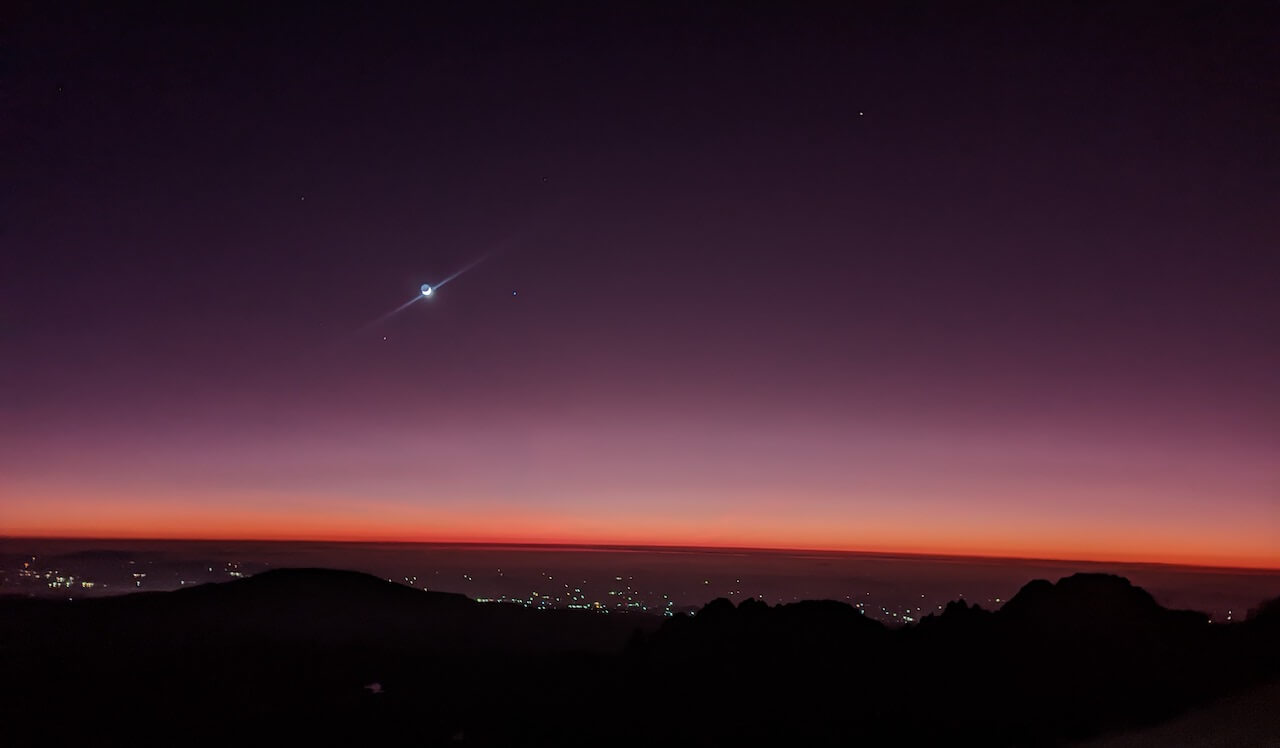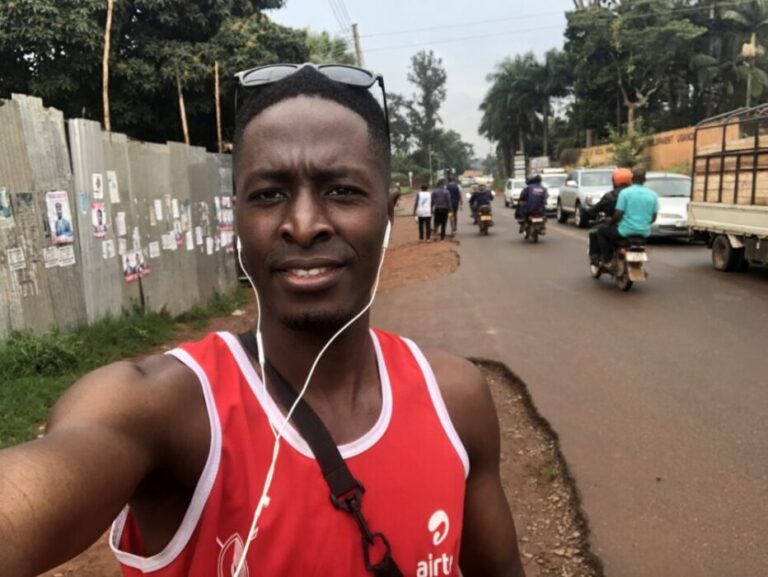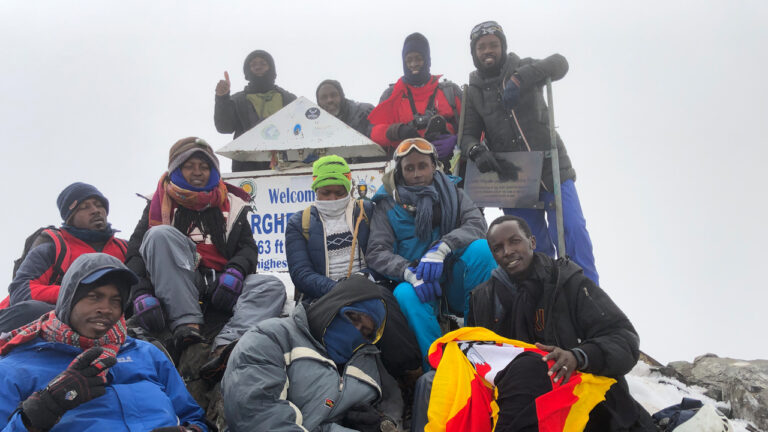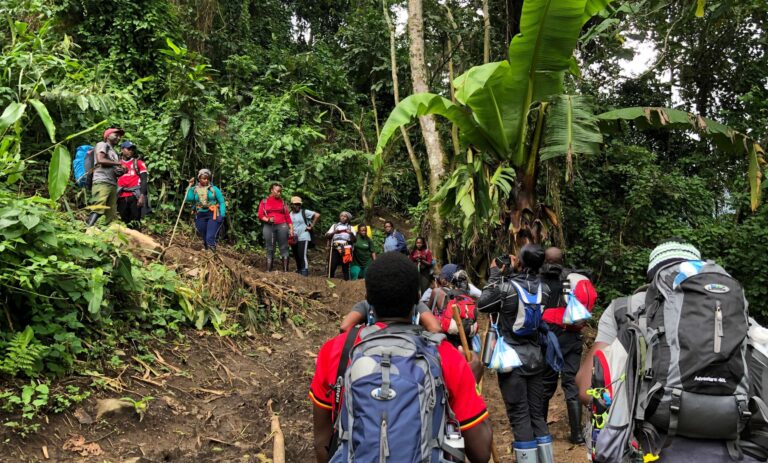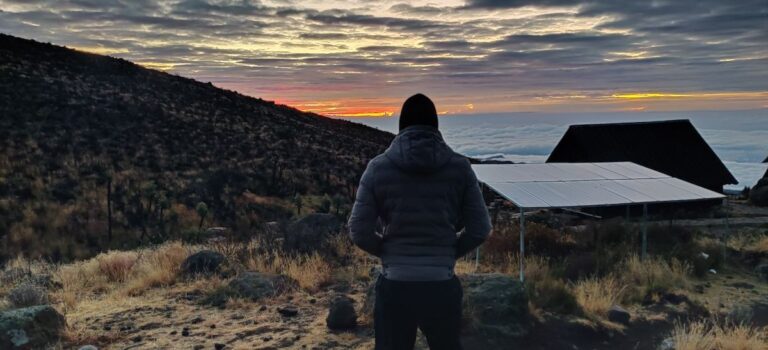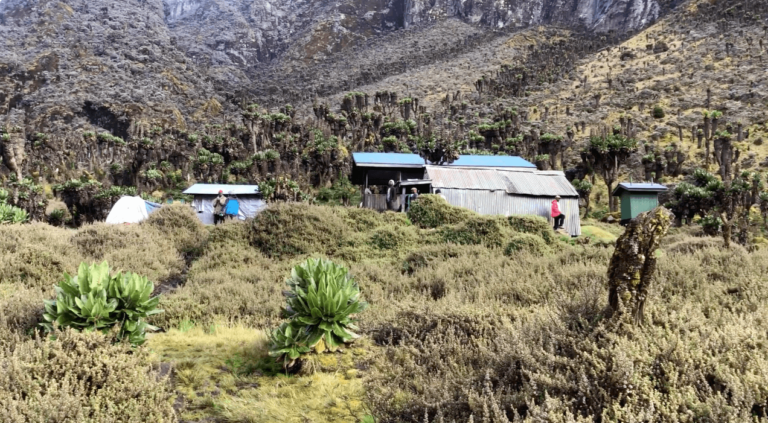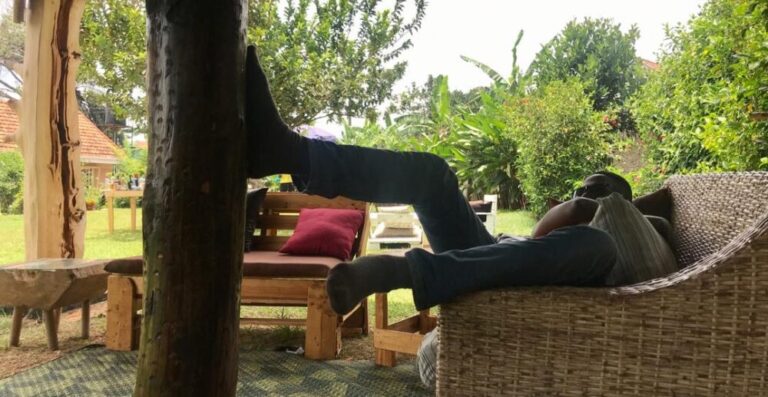Well, I guess it’s about that time, I can finally bring myself to put pen to paper and share the experience of my first attempt to summit the highest point of Mt Kenya.
Batian Peak 5199 meters above sea level (masl) is the highest point of Mt Kenya and the second highest peak on the African continent just after its neighbor to the south, Mt Kilimanjaro (5895masl). This idea of climbing Mt Kenya was born mentally in late October of 2021 after I had summited Mt Kilimanjaro.
I and a few colleagues had savored the taste of success on Africa’s highest mountain and were hungry for more. We set a target to at least summit the 3 highest mountains/peaks on the African continent. Lucky for me, I had completed 2 of the 3 and now my focus turned the spotlight on Mt Kenya. My guide (David), then in Tanzania told me that I would definitely hike Mt Kenya but not the highest peak, he told me I would be doing Lenana peak 4985 masl.
I inquisitively asked him why I would do something that is not the highest peak, “my intention is to summit the top of Mt Kenya”, in his ever-famous calm tone and slightly sarcastic smile, he asked, “Do you know how to make a figure 8 knot?” That was the beginning of this journey. 1 question opened up a whole new world. That’s the thing with adventure, you never know where curiosity will lead you.
I got back from Tanzania and started researching about figure of 8, which led me to rock climbing. I devoured the internet on what is rock climbing, the different kinds of climbing, rope management, and climbing techniques, the list is endless.
Deep in my conscience I started to consider this as a dead end as I had no idea where to get the necessary training, was it even possible in Uganda, was it affordable? All these questions raced through my mind. I read a quote once that said “if you believe hard enough, the universe aligns”.
“if you believe hard enough, the universe aligns”.
Paulo Coelho
The universe aligned on Twitter. I found a video or a picture, can’t recall exactly what but this person was inviting anyone interested to come and learn rock climbing in Kampala Uganda. I didn’t waste a minute, got in touch with the person and not long after that, I was at Mountain Club of Uganda Clark quarry Muyenga. It was early March and I was finally here, a virgin at rock climbing ready to take on this new chapter in the pages of my adventure journey.
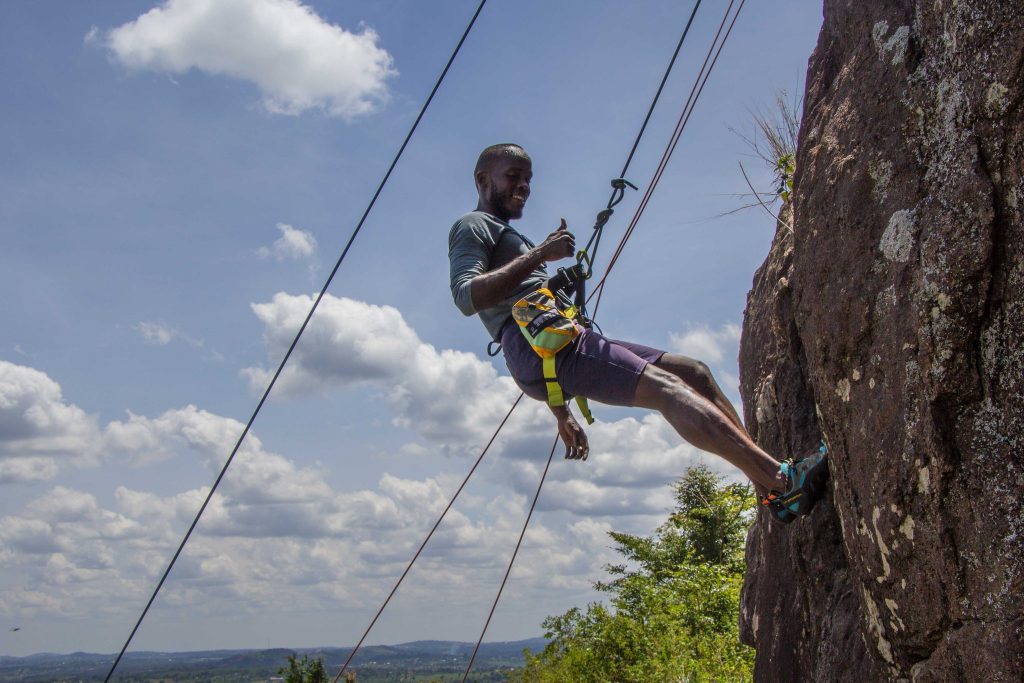
My first tryout
Back story- I always felt really fit when it came to anything to do with physical fitness, at least since the age of 25, cross fit background, I run over 10kms at least twice a week and a personal workout out regimen for 45mins every morning 5days a week. Feeling as fit as one can be, I marched on, it’s only rocks I said.
Reality check.
An ass whooping is an understatement; my bravado complex was sent into hiding. It took this brother approximately an hour on a route that’s barely 10meters, for once in my life I felt so unfit. I gave it my all, climbed, tripped, fell, crawled, cried, laughed. I pushed on till I tapped that anchor. That was my beginning. A new journey. A new sport, a new passion.
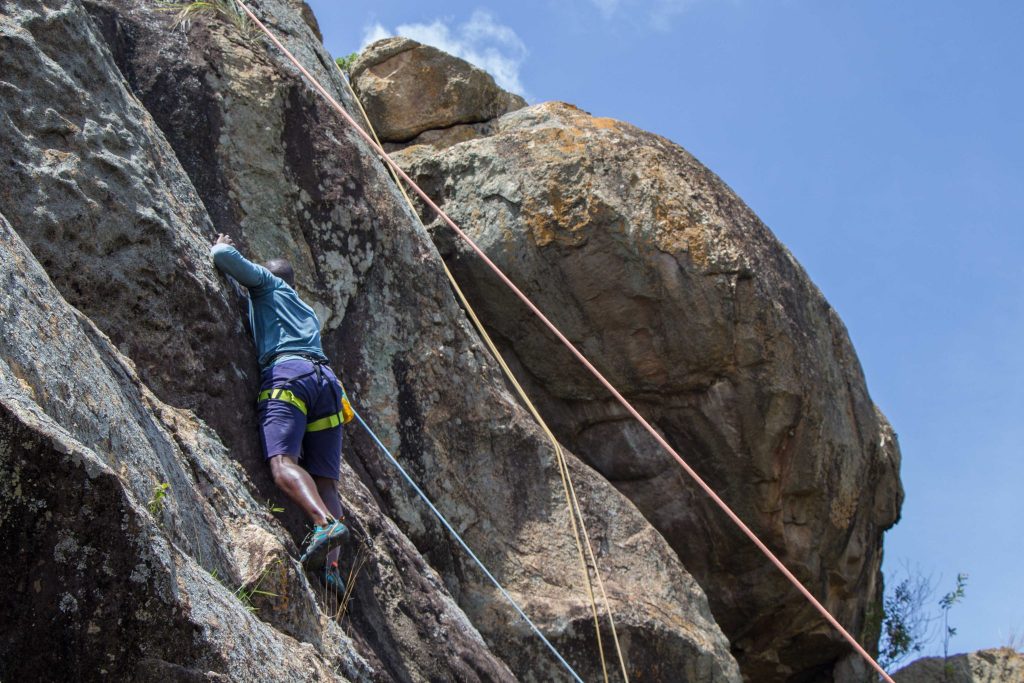
All engines are GO!
Fast forward, 3 months down the road, training thrice a week, improving on my climbing and technique, that dreaded route on day 1 could now be climbed in 5mins or less. I was getting good at this and I loved it. I fell in love, with the art not so much the sport, the art. To find a link between the human mind and a wall puzzle in perfect symphony with one another, each telling their story, it amazed me. I felt lighter, the excitement of being a beginner again, learning something new was refreshing.
It felt like I was back in science class, relearning gravity, physics and all these small connections that had to align just to find the right leverage, to find the next step. I learnt about calming the mind, and controlling my breath. I learnt about the figure 8 knot and many more safety knots, I learnt to harness the strength of my fingers, muscles, tendons, hip movement and YOGA, yes YOGA. It’s one of the best-kept secrets to really improve your climbing and flexibility. All these would work in unison. It was a blissful blend of man and nature, it was poetry and more. I enjoyed every bit of the journey. I still do.
Everyone at MCU is very positive and they all encouraged and shared as much knowledge as they had about the sport. I took in anything and everything and gradually grew from sport climbing to some lead climbing. Sorry for the jargon but let’s just assume that the latter is more complicated. 6months down the road and not many people would believe my progress. In climbing, as you get better, you challenge yourself to attempt a harder route. Routes are usually graded according to difficulty.
In short, it’s a scale of 1 to 10 with 10 being the hardest. I was now trying out some grade 7 routes, which is quite the challenge. By end of July, I was getting really comfortable and felt reignited to take on Batian peak.
Batian peak has had several debates as to its grade/level of difficulty, most people grade it at level 5 to 6 while others rate it as high as 8. In my inexperienced opinion, I understand how the debate arises. For this case, let’s assume Batian is grade 6 with some pitches in the range of 5. This is not so challenging for an average rock climber.
Facts
Batian peak is a 600m wall with technical climb starting at about 4600 masl up to the highest point of 5199masl. It is an average of 16 to 20 pitches depending on the route. A pitch is simply the length of a climb that can be protected by one rope length. A number of sections have loose rocks, temperatures will be at an average of 5 degrees Celsius dropping to zero or minus 5 depending on wind and cloud cover, with chances of snow or rain irrespective of the weather window.
Due to the high altitude, oxygen intake limits the speed of your climb. A climb up and down the peak will take an average of 12 hours. A climber has to be in the fittest of conditions to endure the climb and maintain mental composure under high altitude for 12 hours or more. In these conditions, a simple error leads to serious injury or death. There is no room for complacency. It’s alpine climbing, in its rawest form.
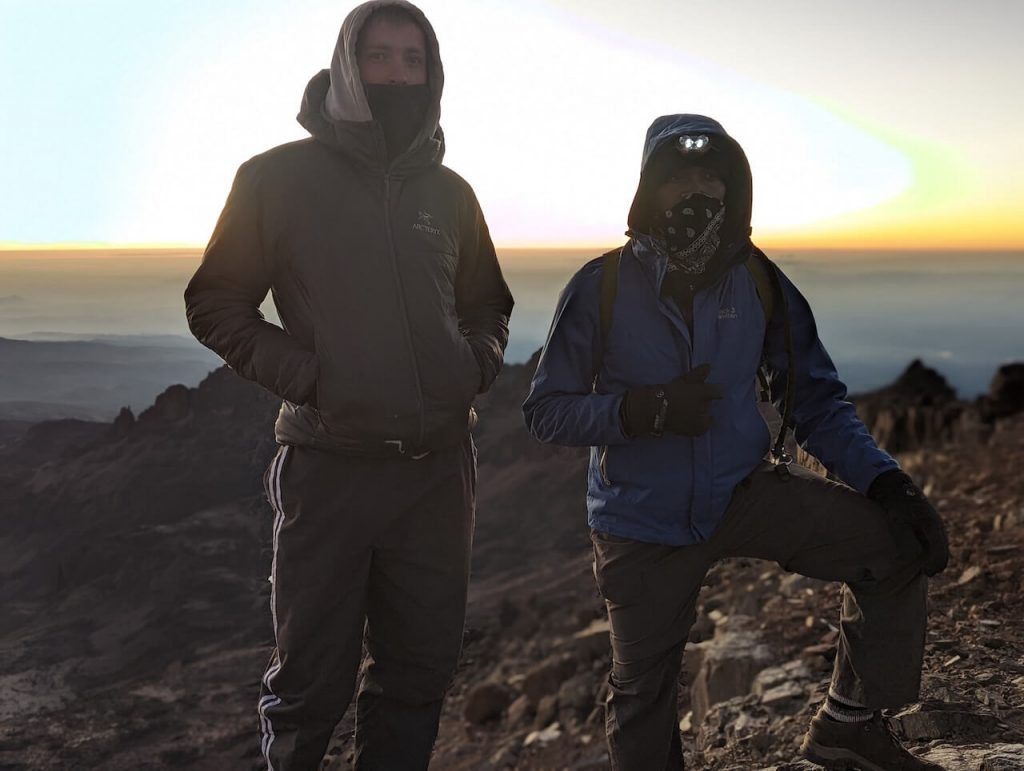
It took me and my partner 18 hours and yet we didn’t reach our goal. Our climb was called off at about 3 pm as daylight, as well as the weather, was not in our favor, temperatures dropped, and it started to snow, at about 5000 masl just 199meters shy of our goal, we turned around after going through a situational analysis. We got to the base of the wall at 23.30hrs and still walked another hour to shipton’s camp (4200masl).
Experiences
In mountaineering, they say you leave a bit of your soul on every mountain, this was it. My partner and I endured a lot, with some unforeseen conditions I can’t include in this story. My partner an experienced Traditional climber was leading the entire climb, with no previous background on this wall, all we had was a write-up and a map describing the route we were climbing, it was a learn-on-the-job kind of scenario, adventurous yes but quite risky.
The other option would be to go with an experienced guide who has done the route countless times and follow through but where is the fun in that? Besides an experienced guide had a steep fee attached to him. More reason for me and my partner to re-affirm that our decision to go bare knuckles was a good one.
We start our climb, gently, my partner is British and thus much more welcoming of the cold weather, my tropical climate cells were screaming at me subconsciously, why are we here! We march on. I had quite the backpack, sleeping bag and some other essentials, for some reason my partner seemed to have a lighter pack yet we both carried essentials only. The reason for this backpack story is simple, at high altitude 2kgs feels like 4kgs, you get the gist. I felt like I was carrying an ever-doubling ton of bricks the higher we went.
6 pitches up and I almost couldn’t take it anymore, luckily we identified a spot where we would camp if the worst came to the worst and I left my backpack stashed away. Rock on, we push onwards, from pitch 9 things get more exciting, the climb is more technical, more energy, stemming, chimney up narrow faces, all the experiences you want as a climber but with a bit more drama, falling/loose rocks whizzing past your ears or on your helmet, some as tiny as pearls, some pebbles, and some, let’s just call it a boulder!
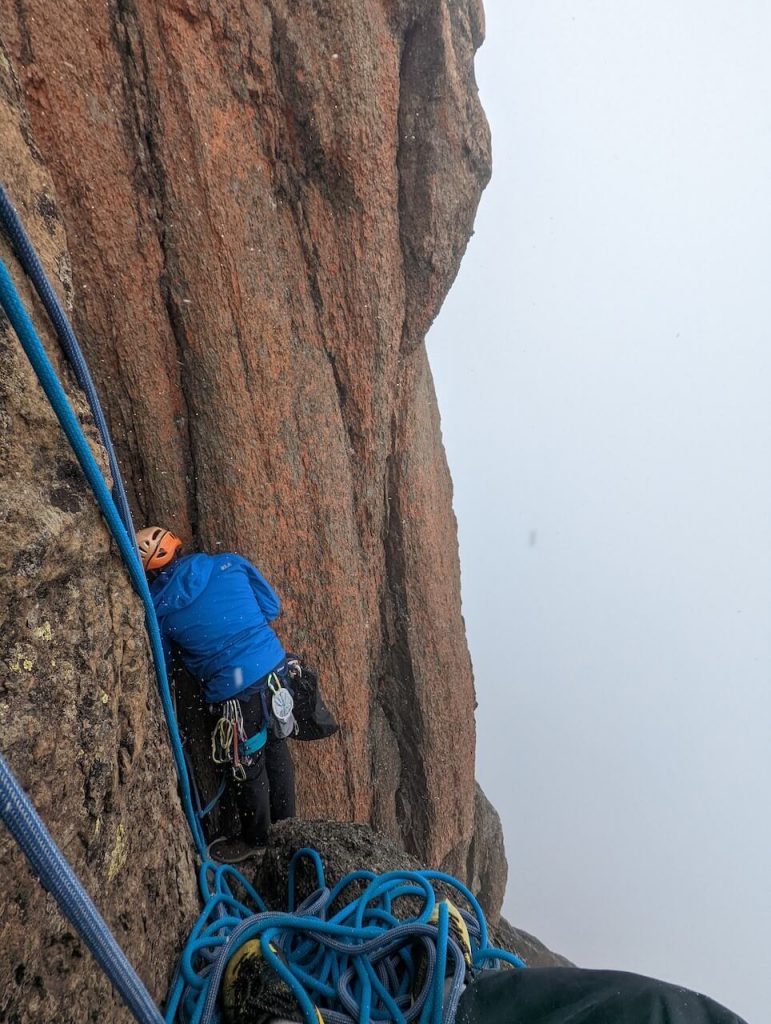
The Boulder problem
It’s not what you’re thinking, let me explain, on our way down abseiling, a much more cumbersome process than anticipated, our rope is stuck, we can’t see how or why, we pull with all our strength or what’s left of it, the rope isn’t budging, we rest, take some more water and snacks and decide to give it a final pull, we count down to 3 and give it our all, the rope loosens, we are relieved but the sound that comes with it is rather loud, looking up, a boulder is barrowing down towards us, I remember me and my partner just kept saying “wo..wo..woo..woo” and instinctively dived on opposite sides of the ledge we were standing on, luckily no one was hurt, the huge rock flew past us.
We were instantly reminded that we are still in the mountain, that our mental acuteness had to keep up till we were on the ground. We looked at each other and sighed. We kept going, anchor, abseil, take down, anchor, abseil, take down. We lost daylight and switched on our headgear. It was getting colder by the minute, we tried to pick up our pace. It was a race against altitude and temperature. Our ropes dump from snowfall had increased friction.
GPS problem
At about 2100 hours my partner says he thinks we are off route, he was basically our GPS, not the response you want from your GPS, it gets a bit tense as we try to figure a way back to our planned route, its mentally exhausting given we are in the middle of the night with temperatures getting colder, at one point we even consider camping for the night but decide to push on.
I suggest we create our own anchors since we couldn’t find the right one because we were off-route, my partner agrees. We accept to sacrifice few slings and carabineers as we wouldn’t get these back, it was one way and that was down. Finally, after setting and checking our improvised anchor was safe, we proceed down. As we proceed we, realize we have to do some down climbing and traverse towards where we thought we would be getting back to our original route. As we down climb the lower pitches we are aware of loose rocks, so extra care is taken.
I missed a heartbeat when one of the rocks I stepped on for support gave way, yes I was tied in but it was still a long fall and a big swing, luckily I had jammed my hand in between a narrow space in the rocks above and remained hanging by my wrist, luckily with no injury but just a bruised wrist. After the traverse and a few more meters down we managed to get back on the right route. My partner was much more calm now.
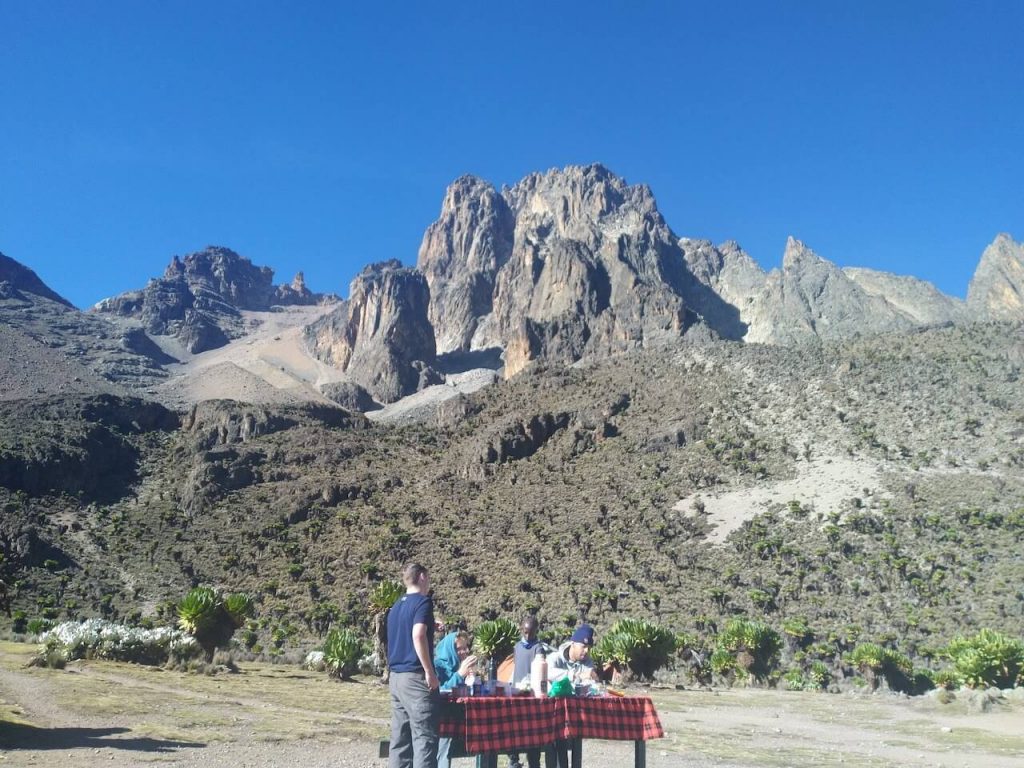
To liven our moods even better, we could see head torches of guides heading towards the base of the wall to receive us. We continued until we were finally down. A hot cup of tea awaited us at the base. A quick gallop down our throats and we were on the trail back to Shipton’s camp, a lot of staggering and composure was still needed, 18hours on the wall and night temperatures had taken their bite at us. All we could think of was to reach camp and get warm. We reached camp at 00.30hrs
Reflection on climbing Mt Kenya
I got to camp, in my opinion half awake, tried to eat dinner but took few bites and decided to call it a night. Yes, I showered!! Somehow, I needed to rest and rest easy. I took the hard decision, shower and fight it out in the sleeping bag. It paid off, I was out in a beep. First time on the mountain I managed to sleep through the night. I slept 8 hours straight.
Now many of you reading will definitely be either intrigued or in awe at the sheer madness of what drives us to these place, to these risks, to these experiences. I will leave you with this quote l learnt from a great traveller after her conquering of Africa’s highest mountain.
Because these places are the ones where feeling comfortably numb is simply not an option, these are the places that make us feel raw and fully human and fully alive and I think that’s why we come out here. And doing that, that takes courage, because it’s easy to never leave our comfort zone but it takes courage to go in pursuit of adventure and to seek our own limits. And I always say this, the world belongs to the brave!
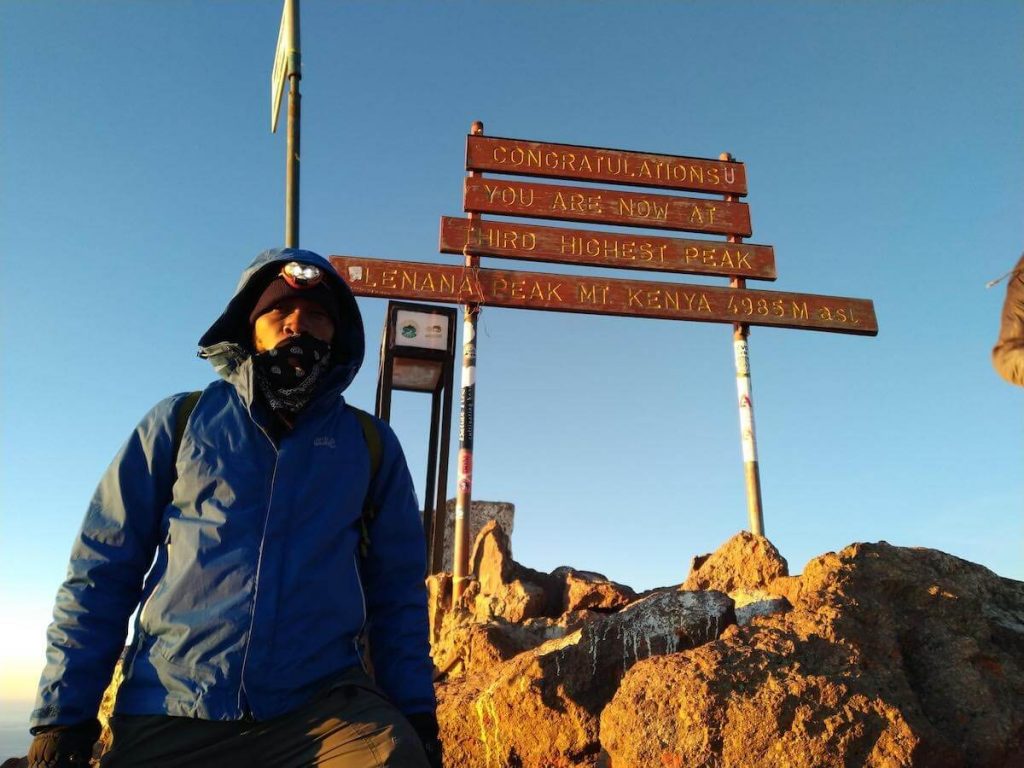
I will see you soon Batian!!!
